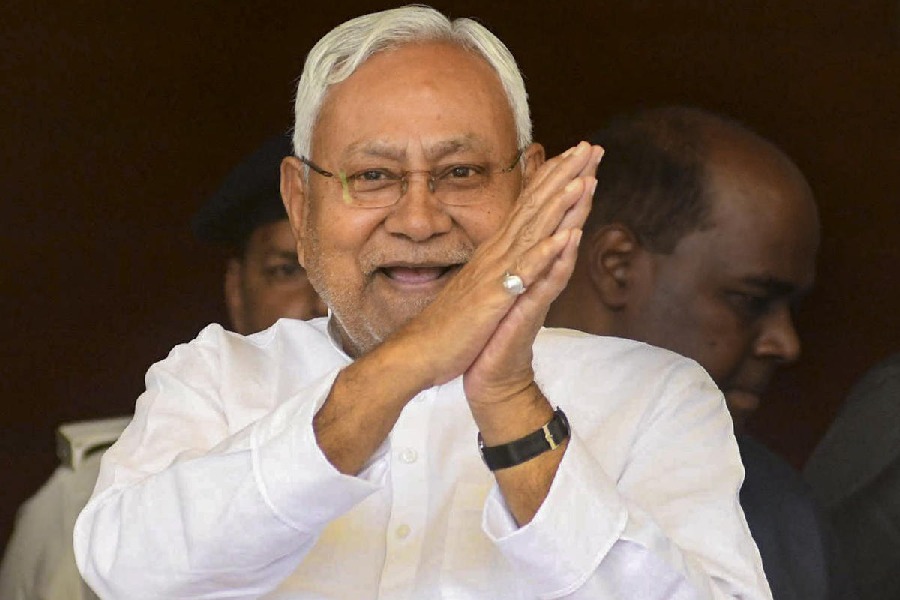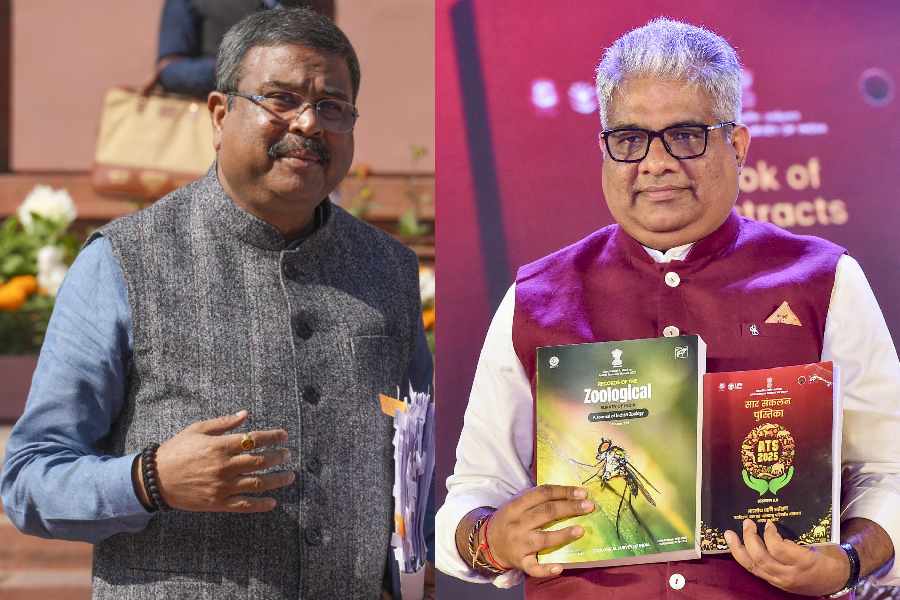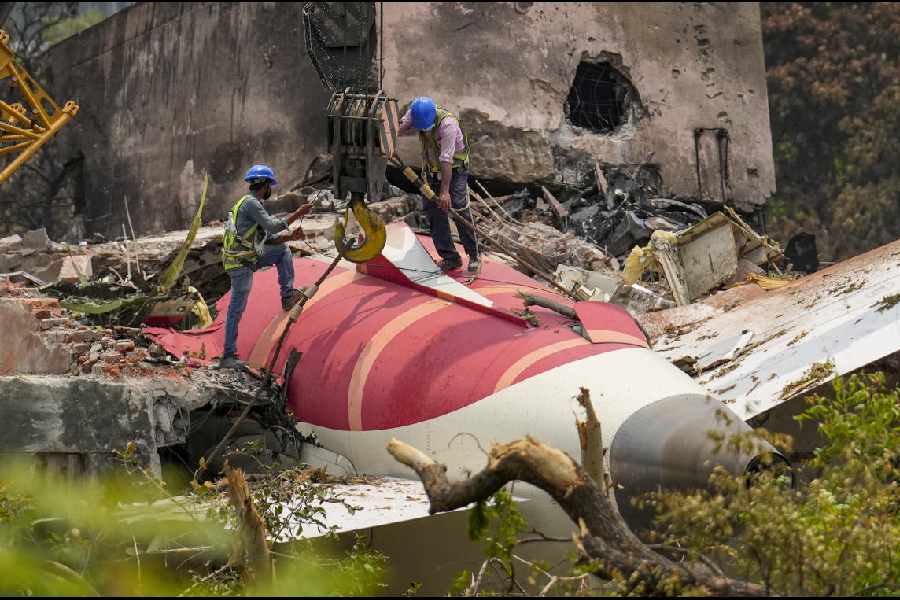
The camera trap image of a snow leopard in Arunachal Pradesh. Picture courtesy: Arunachal forest department, WWF-India
Guwahati, Oct. 5: The elusive snow leopard has been caught on camera in Arunachal Pradesh for the first time.
The species was photographed by a camera trap set up at Thembang, a community conserved area, during a snow leopard survey conducted by the World Wide Fund for Nature - India(WWF) and the state government in March.
Thembang is in West Kameng district and situated at a height of 3,900 metres.
In India, the snow leopard's geographical range encompasses a large part of the western Himalayas, including the states of Jammu and Kashmir, Himachal Pradesh, Uttarakhand and Sikkim and Arunachal Pradesh in the eastern Himalayas. The species is listed as endangered on the IUCN-World Conservation Union's Red List of the threatened species.
Only a fraction of snow leopard habitat in Arunachal falls into two protected areas which are Dibang biosphere reserve and Namdapha National Park, the rest are in unprotected areas.
'The evidence is significant, more so given that large natural areas in Arunachal fall under the custodianship of local communities whose support is crucial to protect the species and its habitat,' a WWF official said.
The principal chief conservator of forests and state environment and forest department principal secretary, Omkar Singh, said this perhaps is the first time that the presence of snow leopard has been reported through a camera trap photograph from Arunachal. 'The findings of this survey will help develop conservation plans for the snow leopards.'
The WWF official said this is the first comprehensive survey to understand the distribution of the species in the state and it will take some time for the results to be announced. There are no official numbers available currently but estimates put the population around 40.
In India, the snow leopard population is estimated to be nearly 500.
The senior coordinator, species and landscapes programme, WWF-India, Rishi Kumar Sharma, said, 'The survey has enhanced our knowledge on the distribution of snow leopards and its prey species for Arunachal, which will be of immense help in the better conservation-management of the species.'
The statewide survey conducted by the WWF-India in Arunachal is significant as it covers one of the 22 priority landscapes of the Global Snow Leopard Ecosystem Protection Program (GSLEP).
The findings of the survey will enable the state forest department to develop a snow leopard conservation plan to address increasing threats like retaliatory killings, infrastructure development and climate change-induced impact on the habitats.
The WWF, in a statement, said the survey was built on the knowledge of the community members to understand the current distribution of snow leopards and other large mammals. Researchers, including trained local youth, interviewed herders and former hunters who provided detailed information on snow leopards across the state as well as its prey species.
'Over 80 per cent of those interviewed confirmed the presence of snow leopards in their area, an encouraging sign for the state,' it said.










